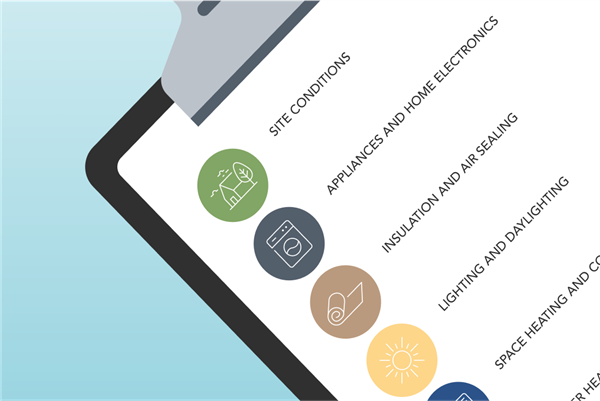Funding Your Projects

Incentives, Rebates, and Financing
As a homeowner, reducing your energy costs and having a more resilient home might be your main goal when you decide to install improvements. But if you do some research, you may find that you can stuff some extra cash in your pocket by purchasing and installing improvements eligible for rebates. Many rebate programs require that you use a participating contractor or apply prior to installation. Be sure to know the terms before you make improvements to get the maximum incentive available.
Incentive and Rebates
There are many types of energy incentives and understanding each one is key to maximizing your total savings. Incentives vary greatly but here are some of the most common:
TAX CREDITS
A tax credit is subtracted from the amount of tax that you owe. Credits are claimed when you file taxes for the previous year, so if you made a purchase this year, you would be claiming your tax credit the following year when you file your taxes. Consult both federal and states agencies for current credits available.
REBATES
Rebates work differently than tax credits by getting cash back into your hands more quickly after you make a purchase. There are no federal rebates for energy efficient purchases at this time. However, many state governments, local governments, and utilities do offer rebates for energy efficient purchases. Some manufacturers also sponsor special offers that can make efficient products more affordable.
Financing
In addition to incentives like tax credits and rebates, there are financing options available if you are interested in making energy, water, and construction hardening home improvements. Depending on your personal situation and needs, one might be a better fit than another. For example, long term financing at a lower interest rate can make improvements more affordable over time. Here are a few options to consider:
• Credit Cards – Many cards offer reward programs to borrows that benefit you when making purchases on the card. However, you will have to pay back what you borrow within a billing cycle or promotional period to avoid paying high interest.
• Cash-out Refinancing or Energy Efficient Mortgages – A cash-out refinance replaces your current mortgage with a new, larger loan and a new interest rate. If you’re considering refinancing, consider the drawbacks carefully. There can be additional fees and costs associated with refinancing. In general, refinancing is only a good idea if you can secure a lower interest rate than what you pay now.
• Home Equity Line of Credit (HELOC) or Home Equity Loans – Both HELOCs and Equity Loans are backed by your home as collateral. Home Equity loans are paid out in a lump sum while HELOCs are a revolving line of credit which mean you can take what you need when you need it.
• State, Local, and Utility Financing Programs – There are several special financing programs available based on where you live and/or who provides your utilities. These programs can offer no-cost or low-cost financing or a longer loan term.
FOR SONOMA COUNTY PROPERTY OWNERS…
The Sonoma County Energy Independence Program (SCEIP) was implemented in 2009 to offer Property Assessed Clean Energy (PACE) financing for residential and commercial properties located in Sonoma County. SCEIP financing pays for up to 100 percent of the project’s costs at a fixed interest rate and is repaid over a 10- to 20-year term as an assessment on your property tax bill. With no money down and an easy qualification process, SCEIP offers a simple way to finance energy efficiency, renewable energy, water conservation, wildfire safety, and seismic upgrades.
THE BOTTOM LINE
Financing a home project takes planning. Homeowners should consider all the options and choose the financing path that is best for their project and financial situation.